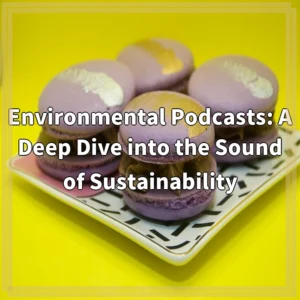
What it is:
Modern art galleries have recognized the importance of embracing sustainability and adopting green approaches to reduce their environmental impact. These establishments are rethinking their practices to align with ecological principles, aiming to minimize waste, promote renewable energy, and foster a sustainable culture within the art industry. Embracing sustainability in art galleries involves implementing strategies that range from energy-efficient lighting and climate control systems to eco-friendly materials for exhibitions and events.
Real-World Problems:
Waste Generation:
Traditional art galleries often generate significant amounts of waste, including packaging materials, exhibition materials, and single-use plastics. Without proper waste management strategies in place, this waste can end up in landfills, contributing to pollution and climate change. Finding sustainable alternatives and implementing effective waste management systems is a key challenge for modern art galleries aiming to reduce their environmental impact.
Energy Consumption:
Art galleries consume substantial amounts of energy for lighting, climate control, and operations. This can result in a significant carbon footprint and contribute to greenhouse gas emissions. Transitioning to energy-efficient solutions, such as LED lighting, motion sensors, and smart climate control systems, poses a challenge due to the potential costs and the need for careful installation and regular maintenance.
Transportation and Logistics:
Art exhibitions often involve transporting artwork from different locations, which can contribute to carbon emissions from transportation. Coordinating logistics to minimize the environmental impact of transportation while ensuring the safety and preservation of artwork poses logistical and budgetary challenges for art galleries.
Eco-Friendly Material Selection:
Traditional art materials may contain harmful chemicals and contribute to pollution. Finding and utilizing sustainable and non-toxic alternatives poses a challenge for art galleries. This includes the selection of responsibly sourced materials, such as paints, adhesives, and framing materials that adhere to environmental standards and support eco-friendly practices.
Community Engagement:
Creating a culture of sustainability within the art community and engaging with visitors to raise awareness and promote eco-friendly behaviors is essential. However, this can be challenging as it requires educating and inspiring artists, staff, and visitors to adopt sustainable practices and make conscious choices.
Financing Sustainable Initiatives:
Implementing sustainable practices may require upfront investments and ongoing costs. Art galleries face the challenge of securing funding and financial resources to support the adoption of green approaches. Balancing the financial aspects with the long-term benefits of sustainability poses a real-world problem for art galleries.

Solutions for Embracing Sustainability in Modern Art Galleries:
Waste Management:
Implementing effective waste management practices, including recycling and composting, can help minimize the amount of waste generated by art galleries. Encouraging artists and visitors to embrace reusable and sustainable materials, such as biodegradable packaging and exhibition materials, can further reduce waste. Additionally, partnering with local recycling facilities and organizations can ensure proper disposal and recycling of materials.
Energy Efficiency:
Art galleries can explore energy-efficient solutions such as LED lighting, smart climate control systems, and motion sensors to reduce energy consumption. Conducting energy audits and investing in renewable energy sources, like solar panels, can also contribute to significant energy savings. Educating staff and visitors about energy conservation practices can further enhance efforts to increase energy efficiency.
Sustainable Transportation:
Art galleries can minimize transportation-related carbon emissions by adopting sustainable logistics strategies. This may involve using electric or hybrid vehicles for art transportation and partnering with shipping companies that prioritize environmental responsibility. Additionally, promoting digital exhibitions and collaborations can reduce the need for physical transportation of artworks.
Eco-Friendly Material Selection:
Art galleries can choose sustainable and non-toxic materials for their exhibitions and events. This includes selecting paints, adhesives, and framing materials that are eco-friendly and adhere to recognized environmental standards. Collaborating with artists and suppliers who prioritize sustainability can also contribute to a more sustainable art industry.
Community Engagement:
Art galleries can actively engage with their local communities to raise awareness about sustainability in the art industry. Hosting workshops, panel discussions, and educational programs can educate artists, staff, and visitors about the importance of sustainable practices. Encouraging artists to incorporate environmental themes into their work can also foster a deeper connection between art and sustainability.
Seeking Funding and Partnerships:
Art galleries can seek funding opportunities, grants, and partnerships with organizations that support sustainable initiatives. Collaborating with corporate sponsors, foundations, and government agencies committed to environmental causes can provide the necessary financial resources to implement and maintain sustainable practices. Emphasizing the long-term financial and environmental benefits of sustainability can help secure support and funding.















